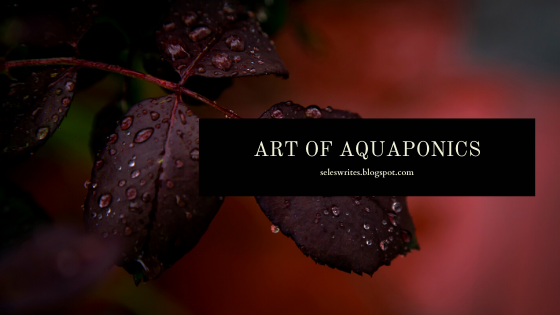The Ancient Art of Aquaponics: Growing plants and food without soil
In the last few years with the increased awareness among the people about the harmful effects of the use of chemical fertilizers, a lot of companies have started marketing their products as organic and non-organic. However, these label stickers on food packaging haven’t been completely successful in gaining back the trust of health-conscious consumers. But what if there was a way to produce plants and crops without soil, fertilizers and chemicals. Will that remove the doubt from a consumer’s mind? Can we grow plants without soil?
Soil, in scientific parlance, is the porous uppermost layer of Earth's crust that helps plants to grow. When I was in school, I was taught how different plants need different kinds of soils and climatic conditions to grow. And so I believed that without the right soil, you can’t grow the plants. I was sure that every state in India has its own set of fruits and vegetables to offer. But then I stumbled upon the concept of Aquaponics.
Aquaponics is a crop
production system in which you can grow plants without soil. This system
integrates the hydroponics* and aquaculture. It brings 3 biological systems-
fish, plants and nitrifying bacteria- together to form a mutually beneficial
cycle.
[*Hydroponics is a system where plants are produced in soil-less medium and the food is supplied to the plants by dissolving nutrients in the water used to irrigate the plants.]
Even though this symbiotic system of growing crops and fish is very ancient, its exact origin is still debated. Some believe that this system was first built by Incas and Aztecs between 14-16th century A.D, while others believe that this was built more than 1500 years ago (somewhere in 5 or 6th Century) in China .
 |
| This picture has been taken from a research paper. |
Anatomy of Aquaponics
So what happens
exactly in this system? You feed fish. Fish eats the food. As a result, fish
releases ammonia. The bacteria feed on this ammonia and convert it into
nutrients. The circulating water carries these nutrients to the plants. Plants
feed on these nutrients present in the water and at the same, hydroponics beds
strips the water of ammonia, nitrates, nitrites, and phosphorous. This freshly cleaned water is then
re-circulated back to the fish tank.
Why is it important?
- Aquaponics is a sustainable process. The products considered as waste in one biological system is considered food in another biological system. Also, it is a closed-loop system; it re-uses water and hence reduces water usage.
- Since plants can grow without any soil in this system, farmers won’t have to deal with problems like soil degradation.
- This system will allow people to grow food anywhere, even in the arid regions suffering from water stress.
- The producers consider the fish manured irrigation water as a source of organic fertiliser. Hence the fruits and vegetables produced in this system will be considered natural or organic.
- The operating costs of this
combined system are relatively reduced when compared to either system in
isolation.
With commercialization, Aquaponics
has the potential to tackle problems like food security for growing global population, resource conservation,
and waste reduction. It also provides us with a way to produce ‘natural’ or
‘organic’ crops.





Interesting buddy!!
ReplyDelete